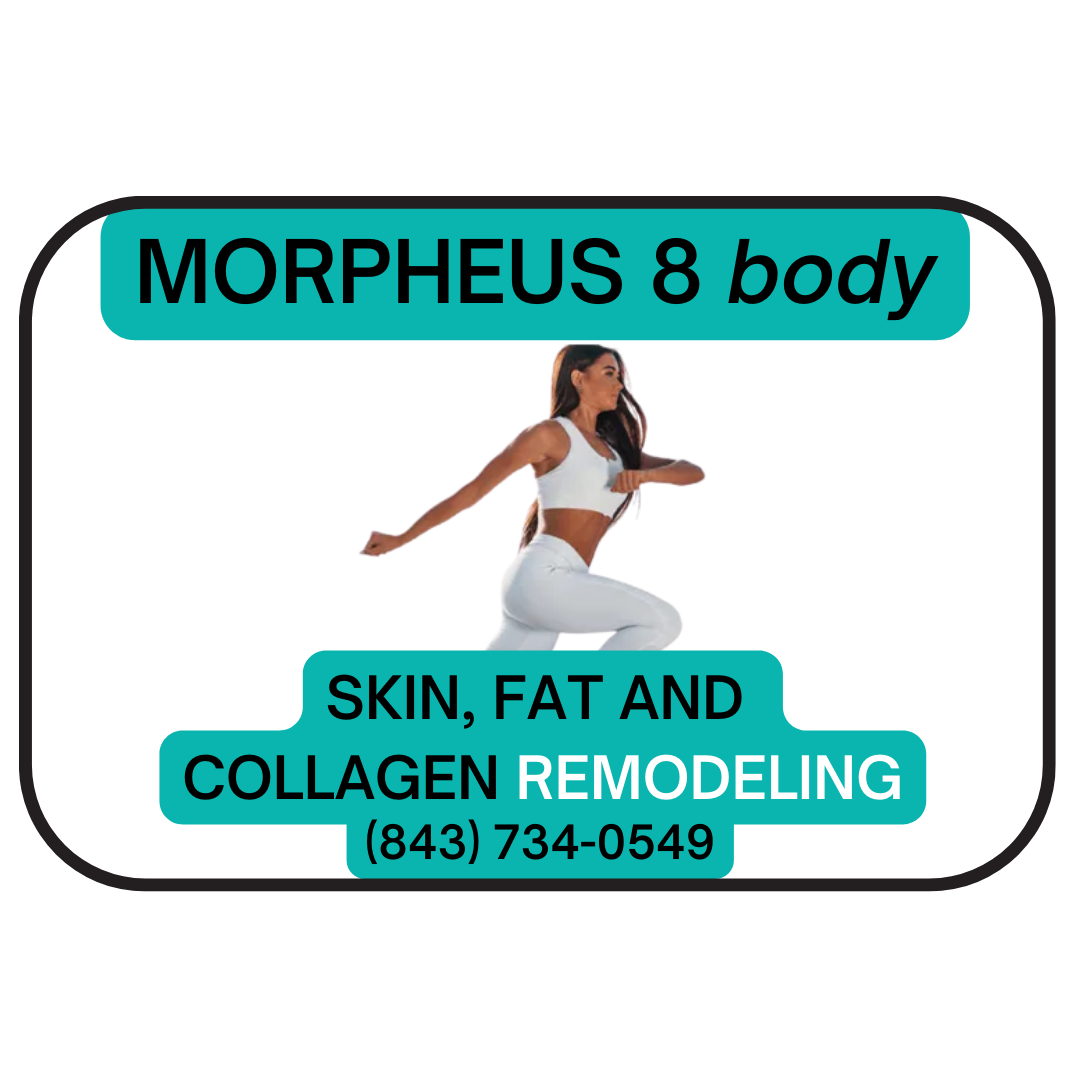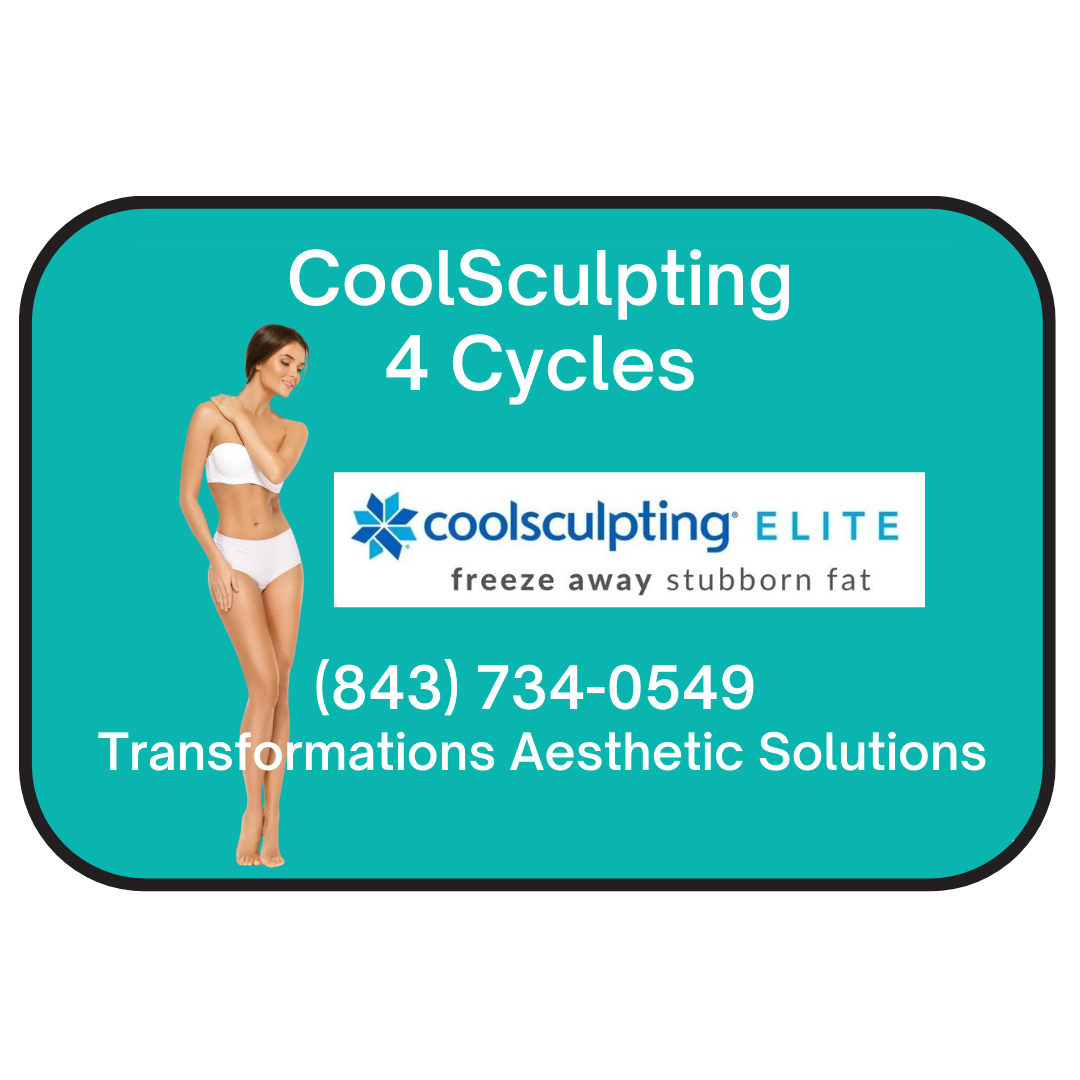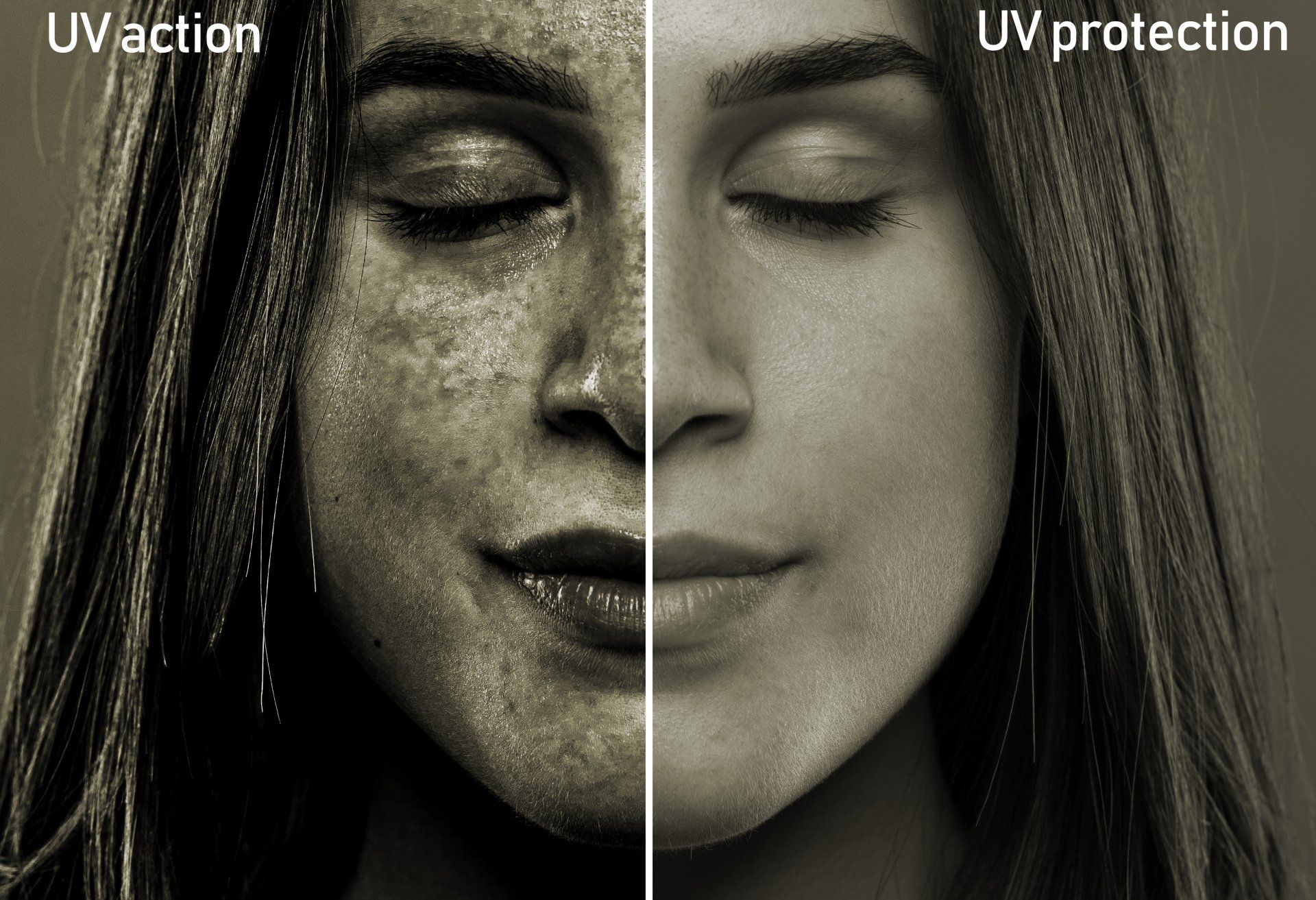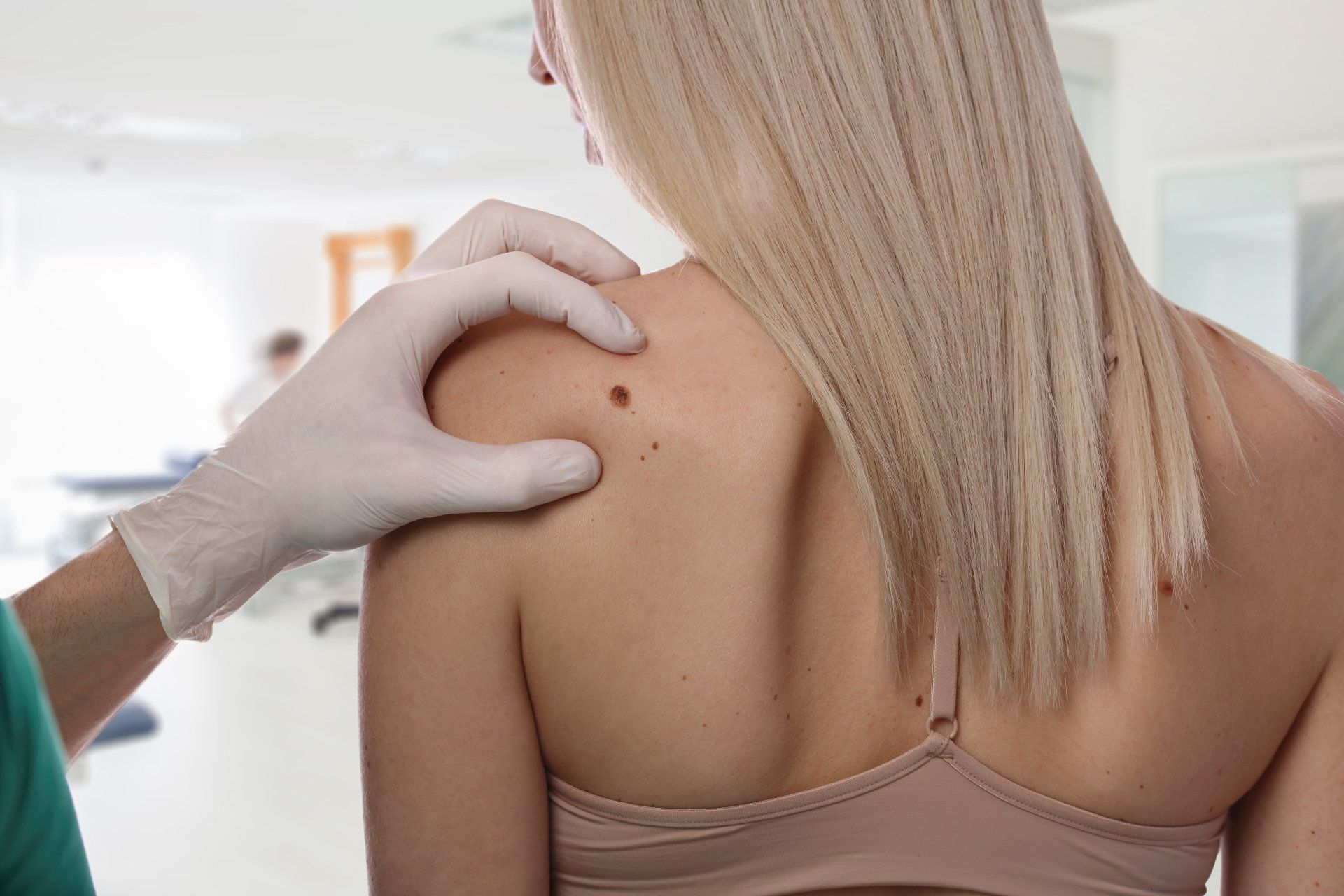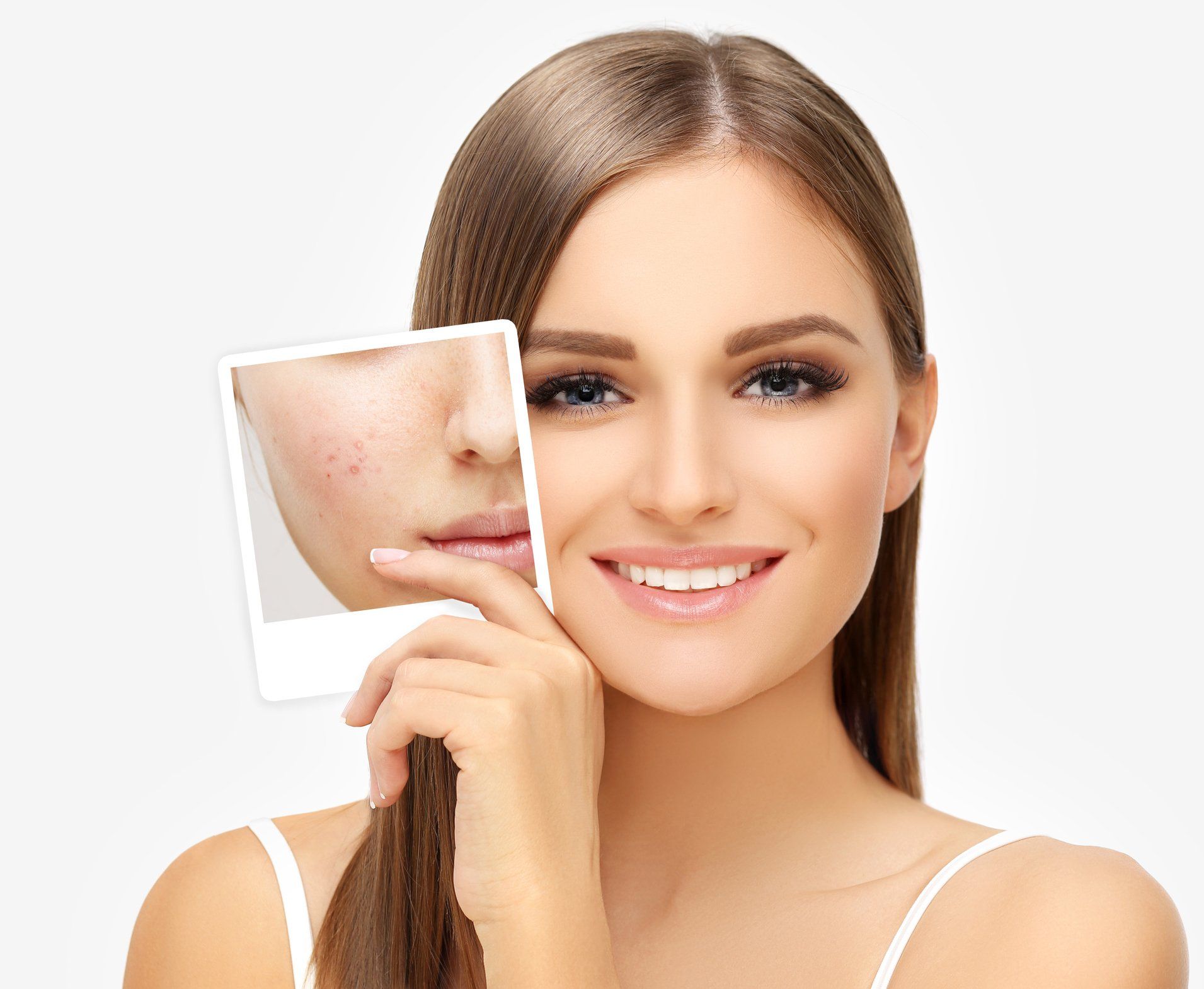Transformations
Aesthetic Solutions
LOOK SIMPLY BETTER, FASTER! ™
Sunburn and UV Light Can Damage Your Skin - Skin Cancer, Sunburn Relief
Very simply, sunburn and UV light can damage your skin, and the damage can lead to skin cancer. There are, of course, other determining factors, including your genetics and the environment you live in.
Both the total amount of sun received over the years, and overexposure resulting in sunburn, can cause skin cancer. Most people receive 80% of their lifetime exposure to the sun by 18 years of age. The message to parents from this information is to protect your children from the sun with sunscreens whenever exposure is occurring.
Skin Cancer Can Be Slow In Progressing
Skin Cancer Removal
Tanning is your skin’s response to UV light. It is a protective reaction to prevent further injury to your skin from the sun. However, it does not prevent skin cancer.
Remember, skin cancer can be very slow to develop. The sunburn you receive this week may take 20 years or more to become skin cancer. If there is a history of skin cancer in your family, you are probably at a higher risk. People with fair skin, with a northern European heritage, appear to be most susceptible.
The level of UV light today is higher than it was 50 or 100 years ago, making it more dangerous to the skin. This is due to a reduction of ozone in the earth’s atmosphere.
"Mohs Rapid” Surgery Is A Specialized Treatment For The Total Removal Of Skin Cancer
A skin cancer check can help to identify areas of concern and allow you recognize skin cancer before it gets out of control. “Mohs Rapid” surgery is a specialized treatment for the total removal of skin cancer. The skilled surgeons at Transformations Aesthetic Solutions can remove skin cancer with a several millimeter margin, and then examine the edges to determine if complete removal is required, often while you wait. This minimally invasive approach has a near perfect success rate. Dr. Thomas Quirke, Owner/Operator of Transformations, has performed more than 60,000 Surgical Procedures. Your skin from the top of your head to the bottom of your toes is our concern and our canvas.
FAQS Skin Cancer & UV Light
-
Does UV radiation cause cancer?
Most skin cancers are a result of exposure to the UV rays in sunlight. Both basal cell and squamous cell cancers (the most common types of skin cancer) tend to be found on sun-exposed parts of the body, and their occurrence is typically related to lifetime sun exposure.
-
What types of behaviors can cause skin cancer?
* Spending time in the sun for recreation (including going to the beach).
* Spending a lot of time in the sun in a swimsuit.
* Living in an area that gets a lot of sunlight.
* Having had serious sunburns in the past (with more sunburns linked to a higher risk).
* Having signs of sun damage to the skin, such as liver spots, actinic keratoses (rough skin patches that can be precancerous), and solar elastosis (thickened, dry, wrinkled skin caused by sun exposure) on the neck.
-
Are tanning beds dangerous?
Studies have found that people who use tanning beds (or booths) have a higher risk of skin cancer, including melanoma and squamous and basal cell skin cancers. The risk of melanoma is higher if the person started indoor tanning before age 30 or 35, and the risk of basal and squamous cell skin cancer is higher if indoor tanning started before age 25.
-
Where do most skin cancers start?
Skin cancer develops primarily on areas of sun-exposed skin, including the scalp, face, lips, ears, neck, chest, arms and hands, and on the legs in women. But it can also form on areas that rarely see the light of day — your palms, beneath your fingernails or toenails, and your genital area
-
What are the warning signs of melanoma?
Spread of pigment from the border of a spot into surrounding skin. Redness or a new swelling beyond the border of the mole. Change in sensation, such as itchiness, tenderness, or pain. Change in the surface of a mole – scaliness, oozing, bleeding, or the appearance of a lump or bump.
IMPORTANT! All information presented in this website is intended for informational purposes only and not for the purpose of rendering medical advice. The information contained herein is not intended to diagnose, treat, cure or prevent any disease.
Copays and deductibles are due upon or prior to rendering of services. The services for patients whose insurance or benefit plan Transformations Skin & Body Solutions participates in shall be charged at the fees, according to such insurance or benefit plan. We refer you to your plan for specific details.
All Rights Reserved | Transformations Aesthetics Solutions
Powered by MyTownVIP
beautifill, laser hair removal, evolve, deviated septum, weight loss, coolsculpting, liposuction, micro-needling, micro needling, tummy tuck, botox, botox near me, laser hair removal near me, contouring, body sculpting, septoplasty, breast reduction, facelift, mommy makeover, coolsculpting near me, dermal fillers, hair removal, cosmetic surgery, body contouring, body contouring, morpheus8, otoplasty, mini-tummy tuck, smartlipo, tighten skin, neck lift, brow lift, skin tightening, radiofrequency, skin tighten, soprano, body sculpting near me, mini-facelift, anti-aging, fat transfer, stomach tightening, tone muscles, facial plastic surgery, neck liposuction, chin augmentation, coolmini, laser treatment, trusculpt, skin resurfacing, skin rejuvenation, fat removal, facial rejuvenation, skin treatment, laser skin treatment, filllers, trusculpt flex, reduce fat, morpheus8 near me, tempsure envi, wrinkle reduction, wrinkle reducer, wrinkle reducer, body rejuvenation, muscle sculpting, build collagen, soprano ice laser hair removal, tempsure envi near me, non-invasive treatment, muscle treatment, ice laser hair removal, partial tuck, pellevé, breast implants south carolina, neck enhancement, cosmetic fat transfer, improve skin quality, transformation aesthetic solutions, liposuction near me, liposuction south carolina, breast augmentation, breast augmentation south carolina, breast implants, breast lift, breast reconstruction, breast reconstruction south carolina, breast surgeon, breast surgeon near me, breast augmentation surgery, face, nose & eyes, rhinoplastynose surgery, eyelid surgery, blepharoplasty, ear surgery (otoplasty), cheek augmentation, facial plastic surgeon near me, tummy tuck horry county, tummy tuck surgery, mommy makeover horry county, coolsculpting horry county, body sculpting horry county, body contouring horry county, tighten, trim and tone, fat cell transfers, microneedling, minimizes wrinkles, non-invasive laser procedure, pellevé treatment, botox horry county, botox injections, hair restoration, hair loss, hair restoration near me, best hair restoration, restore hair, prp therapy, prp therapy for hair loss, prp hair restoration, female sexual health, tempsure, vaginal rejuvenaation, vaginal health, tempsure vitalia, excessive sweating, hyperhidrosis, hyperhidrosis treatment, excessive sweating treatment, icon, scar reduction, treat acne scars, acne scars, how to get rid of acne scars, acne scar treatment, acne scar removal, scar treatment, laser scar treatment

